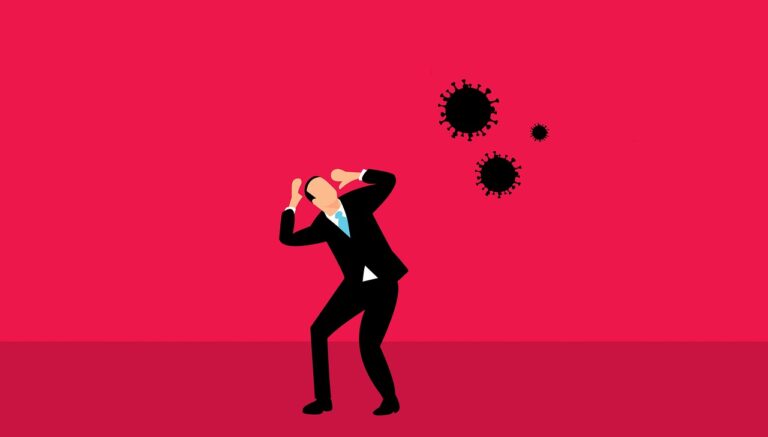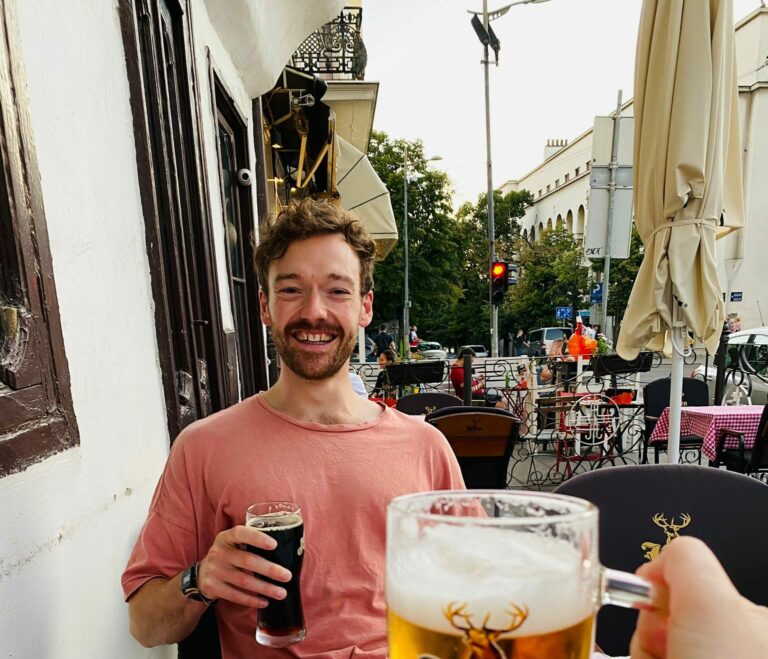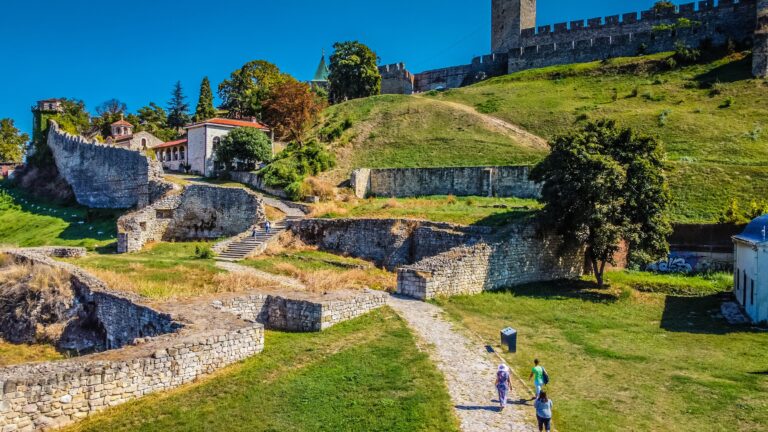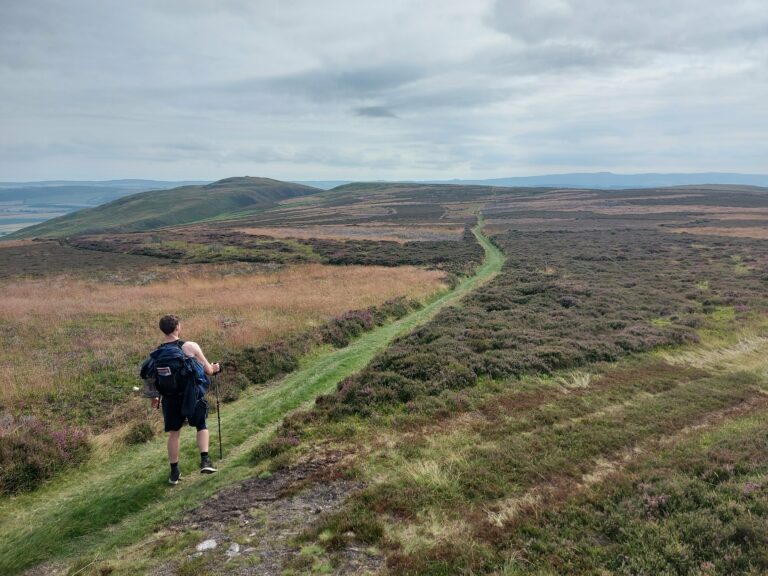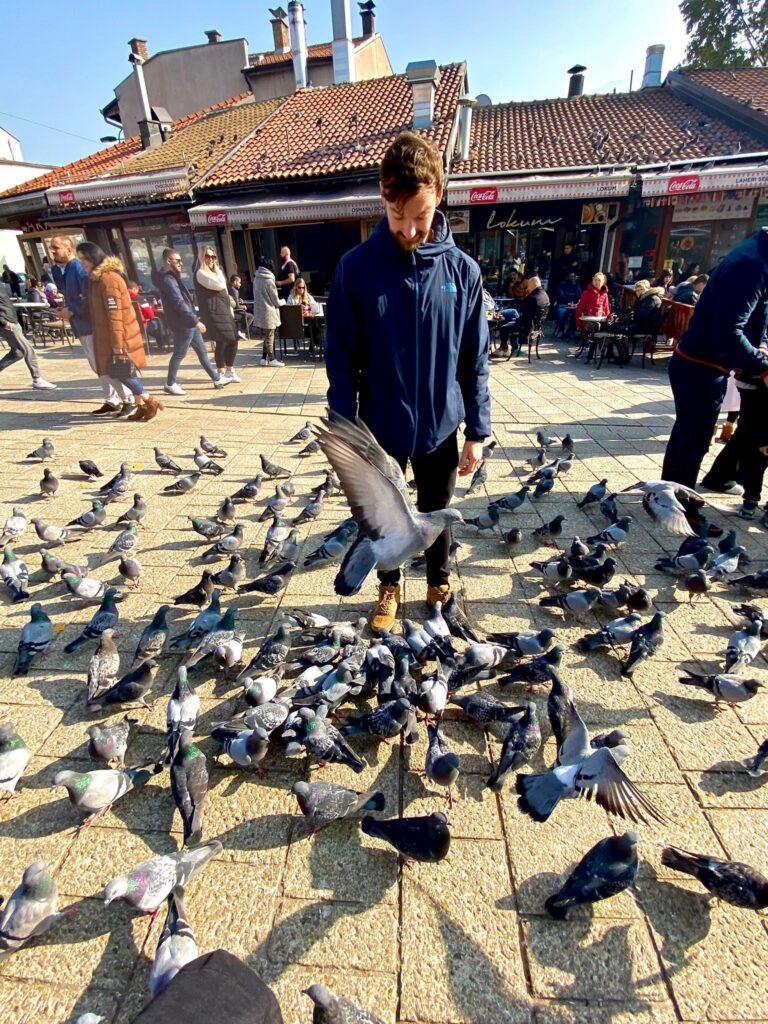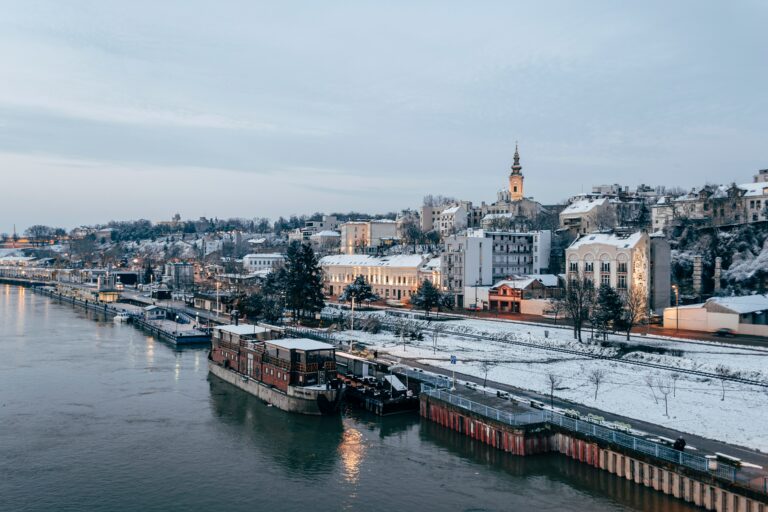Living in Belgrade: A Quick Guide for Remote Workers
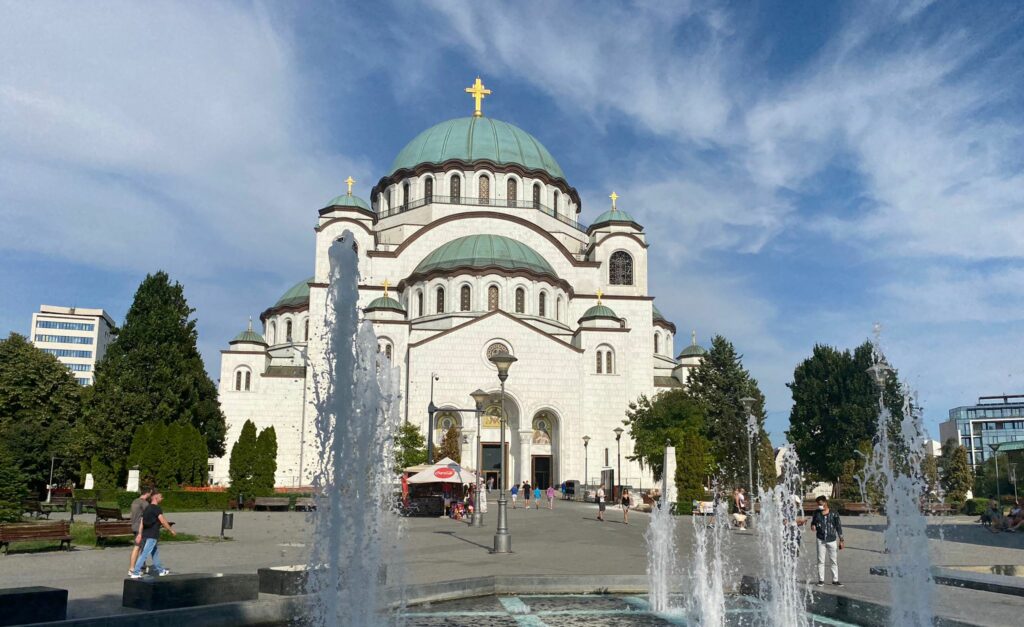
A little while ago, I was living in Belgrade for around four months.
I was hardly a proper expat, and I’m not gonna call myself a big fat expert, but I got a good insight into the city.
So in this speedy guide, I’ve brought you details on what living in Belgrade is like. I’ve covered everything you need to know, including stuff about fun, food, prices, people, and why I absolutely loved the place*.
*and why you will too.
Contents
Weather in Belgrade
In summer, Belgrade’s weather is really warm and lovely, and you’ll want to spend all your time outdoors. Most people (who haven’t been to Belgrade) seem to assume that the city is perpetually cold and grey, like everyone’s living in some depressing novel about the Cold War.
Note to readers: Serbia is not Siberia.
Yeah, in winter, Belgrade can be horrible and bleak (or so I’ve heard).
But in summer, weather is great. Temperatures often hit lofty highs of 27°C (though usually a lot higher), and they last a long time. When I was in Belgrade, the weather didn’t start getting cold(er) until the middle of October, so from March until September, you get good temperatures, and very little rain or wind.
So pack those sunglasses and shorts baby, you’re gonna need them!
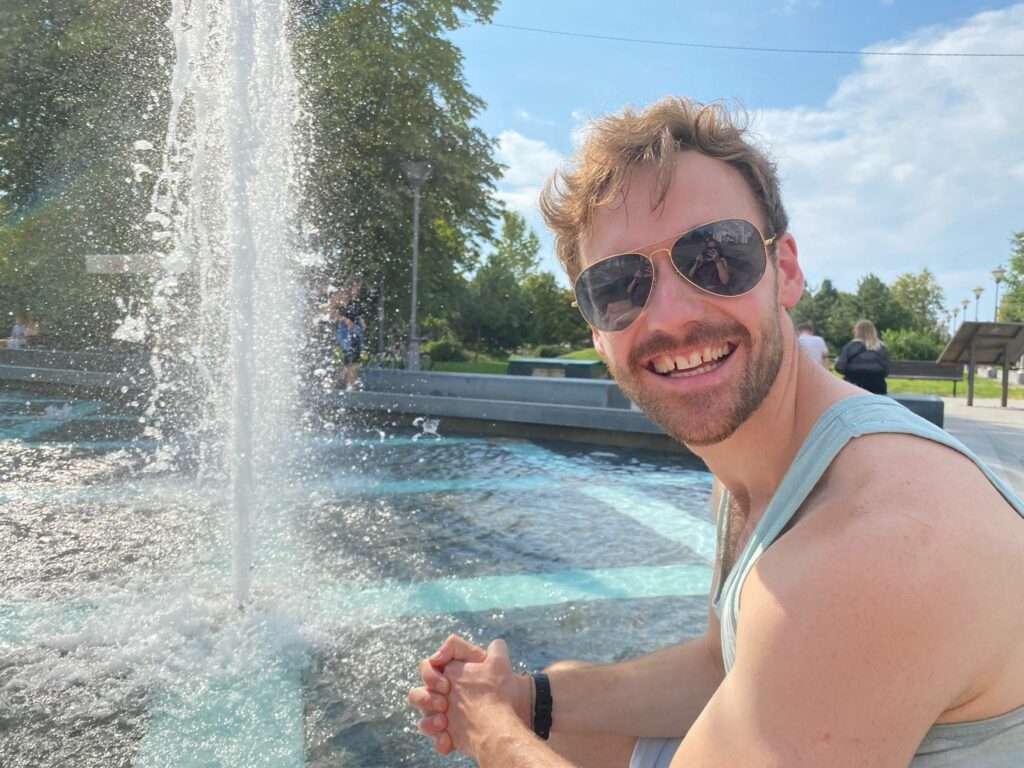
Visas for Living in Belgrade
Obviously, this is going to change depending on where you’re from (so have a little check for yourself depending on your country of origin). But from loads of countries (including the UK), you can visit Serbia for 90 days with no visa. Just turn up to the border, get your passport out, give the border guard a little smile, and you’re in. Easy.
If you want a longer visa, you can just apply for one while you’re in Serbia (or so I’ve heard – I just did a quick border hop to Bosnia and re-entered). So unless you absolutely know you’re gonna stay for more than 3 months, I wouldn’t worry about sorting out anything in advance.
Where to Live in Belgrade
Most short-term expats are gonna live in the center. But the center (and its outskirts) are broken down into various different districts. The best of them are:
- Stari Grad: As you probably already know, ‘Stari Grad’ just means ‘Old Town’ throughout lots of Europe. Serbia’s Stari Grad is right in the center, so you’re well-located for having fun, finding good hangouts, and making lots of friends. Apartments here are expensive (for Eastern European standards), but it’s a good place to stay if you’re sticking around for 1-3 months.
- Savamala: I stayed here for a month and really enjoyed it. It’s half-modern, half-retro, so it gives a good insight into Belgrade’s past, present and future. You’re right on the Sava River (good for running and cycling), you’re close to lots of good clubs, and you spend most of your time hanging out in non-touristy places. It’s easy to reach Ada Ciganlija from here (but more on that funfest later).
- Dorćol: Coolville. Trendytown. Happeningsburg. If you live here, everyone thinks you’re posh. It’s not that posh, but it is for Belgradian (is that a word?) standards. I stayed here for a couple of months, and it’s great. You get loads of good cafes, restaurants and events, and endless hipster hangouts for eating and drinking. Dorcol is part of Stari Grad.
- Vracar: A big district south of the very center. This is apparently the up and coming hipster area, but I didn’t find much proof of that. To me, it seemed like a worse Dorćol. It’s home to St. Sava and St. Mark’s (two churches, and two of the biggest tourist attractions in Belgrade) and the Nikola Tesla Museum.
- New Belgrade: Over the other side of the Sava River, you have New Belgrade. Largely a residential district, you don’t find many tourists here, and it’s not as busy. But there’s lots of fun stuff (or the sort of stuff you find fun if you’ve been staying in a place for a while). I hopped over to New Belgrade for bouldering, board game cafes, cycling, running, a beer festival and more.
- Zemun: This place is far out (as in far from the center of Belgrade, not rad), so you probably won’t stay here. But if you like quieter pockets of big cities, consider it. West of Belgrade, it’s like a little town of its own, with colored buildings, a village vibe, and very few tourists. It’s a good choice if you’re on a budget.
A quick note, before we move on: Belgrade, compared to most capital cities, is pretty small. It only has a population of around 1.5 million. If that means nothing to you (it meant nothing to me either when I Googled it 2 minutes ago), here’s some context: London’s population is 9 million. Tokyo’s is 14 million. Istanbul’s is 16 million. See, Belgrade is small.
Because Belgrade is small, all of its central districts are really close to each other. So unlike London or any other big city, where you stay isn’t too important. Dorćol is the best place to be, but all the other central districts are really close by, and you never have to walk or travel far to get to events.
Where to Work in Belgrade
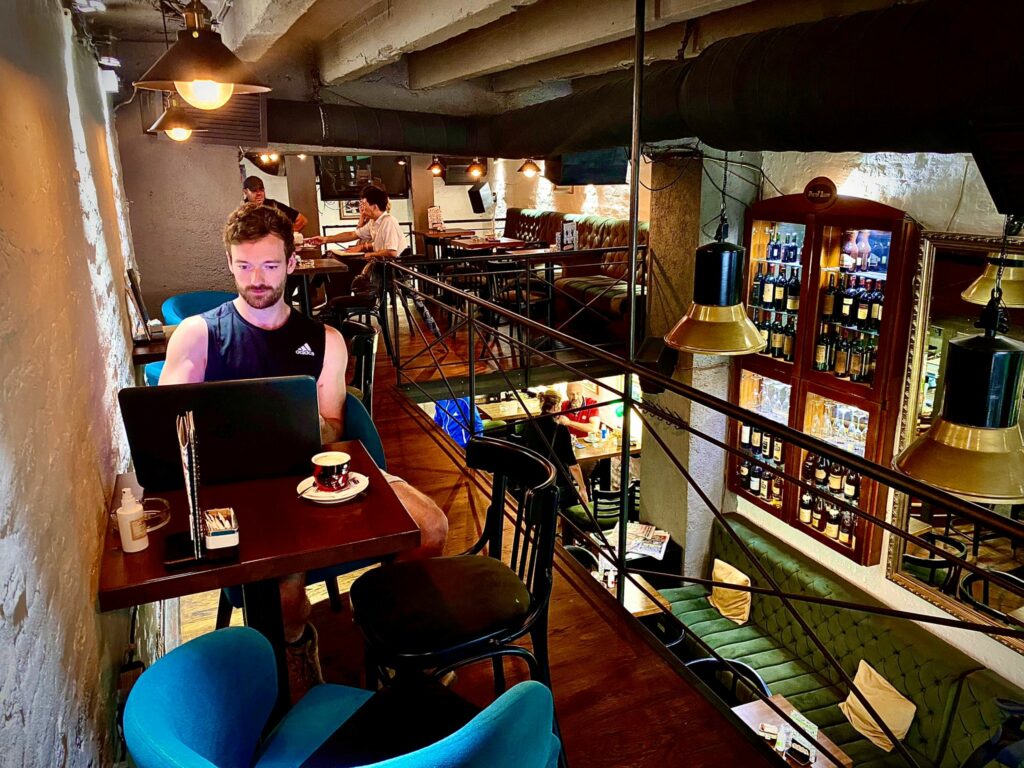
If you’re reading this, you’re probably a digital nomad. If you’re not, I’m not gonna be much help here.
But if you are, there are LOADS of places in Belgrade to work. You’ll see endless numbers of people working in cafes. Belgrade has a massive cafe culture, with countless places to slurp on a coffee and type away on your laptop like some sort of cosmopolitan tosspot.
Remote working in cafes is really popular and common here. Some of my favorite places for remote working are Kafeterija 1907, KC Grad, and Coffee, Tea and Sympathy.
Here, I’ve published a bigger guide on my top 5 favorite places to work in the city.
There are also lots of co-working spaces in Belgrade, and lots of them come with good reputations. But cos there are so many cafes, and cos I was staying in a spacious apartment, I didn’t bother visiting any co-working spaces.
Final thoughts on this one: Belgrade is absolutely an up-and-coming remote working spot. In 5 years, it’ll be much busier – so visit now before the prices rise, the charm evaporates and the locals get jaded.
Cost of Living in Belgrade
Belgrade, for European standards, is pretty cheap. It’s nowhere near as cheap as some other parts of the world, but for a vibrant capital city, it’s really affordable.
For a central AirBnB, you’ll probably pay around $500-700 per month. If you rent local, you’ll find stuff for half the price, but that might be a challenge on a short-term lease when you want no deposit and you don’t (yet) know any locals.
For a cheap meal, you’ll pay around $4-5. In a slightly classier place, you’ll pay around $8-10.
Groceries are surprisingly expensive, on par with central Europe (from my experience, anyway).
In bars, a beer is around $2 or $3, or sometimes a little less. A good coffee is around $2.50; a bad one is around $1.50.
I’ve covered all these costs in much more detail in my bumper guide to the cost of living in Serbia.
You can pay by card for most things in Belgrade. About 80% of the time, card payments (both contactless and chip & pin) are accepted.
Food in Belgrade
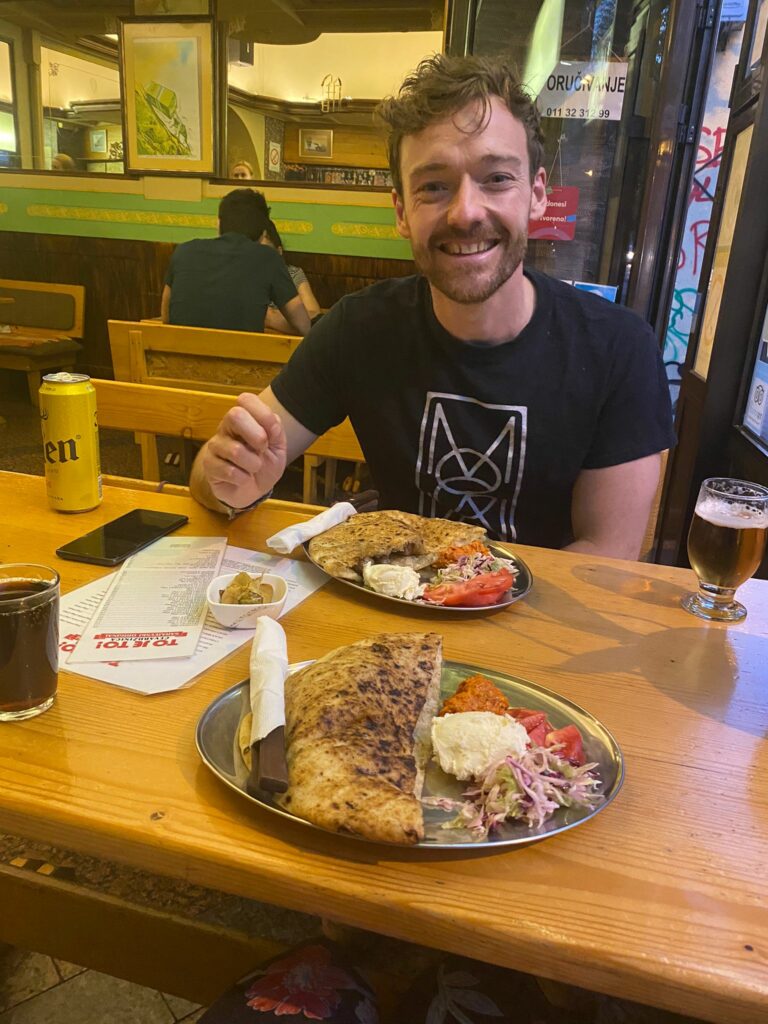
Like stodge? Like cheese? Like pastry? Like loads and loads and loads of meat? Welcome to Belgrade baby!
I love Serbian food. I’ve covered the cuisine in more depth here, but for now, these are the top things you need to try:
- Kajmak: Imagine cheese, mixed with salt, mixed with clotted cream. Then take that flavor and double its tasty-factor. That’s kajmak! You can whack it on bread, eat it with meat, put it on a spoon, whatever. But make sure you stuff loads of it in your big fat face.
- Ćevapi: Tasty little sausages, grilled, then served with bread, raw white onion, and sometimes kajmak and ajvar. The best place to go for ćevapi (where I was in the picture above) is ‘To Je To,’ a little local place where a delicious meal is only around $3.
- Ajvar: Mashed up peppers and aubergine, this is lovely on bread. The stuff from the supermarkets is nothing special, but the homemade stuff you get from restaurants is incredible.
- Burek: Is it a pie? A pastry? A pasty? Who knows, but it’s amazing. Go to Trpkovic Pekara for the best one I had (most local people reckon this one is the best too, and there’s always a queue).
- Salads: Alright, Serbian food isn’t all a belly-busting, stroke-inducing greasefest. You’ll actually find loads of salads. The best is Sopska Salad (cucumbers, tomatoes, onions and white cheese), but you can get plenty more.
Best of all, loads of this food is really tasty and cheap, especially if you go to the local places.
The above are all the most popular local stuff, but because Belgrade is a capital city, you can get whatever sort of food you want. Sushi, curry, Thai soups, pasta, whatever. And on top of all that, Belgrade’s coffee is incredible coffee, and you’ll probably spend loads of your time hanging around in cafes. I reckon the city has the best cappuccinos I’ve ever had.
(Yes, you’re right, I am a pretentious bellend).
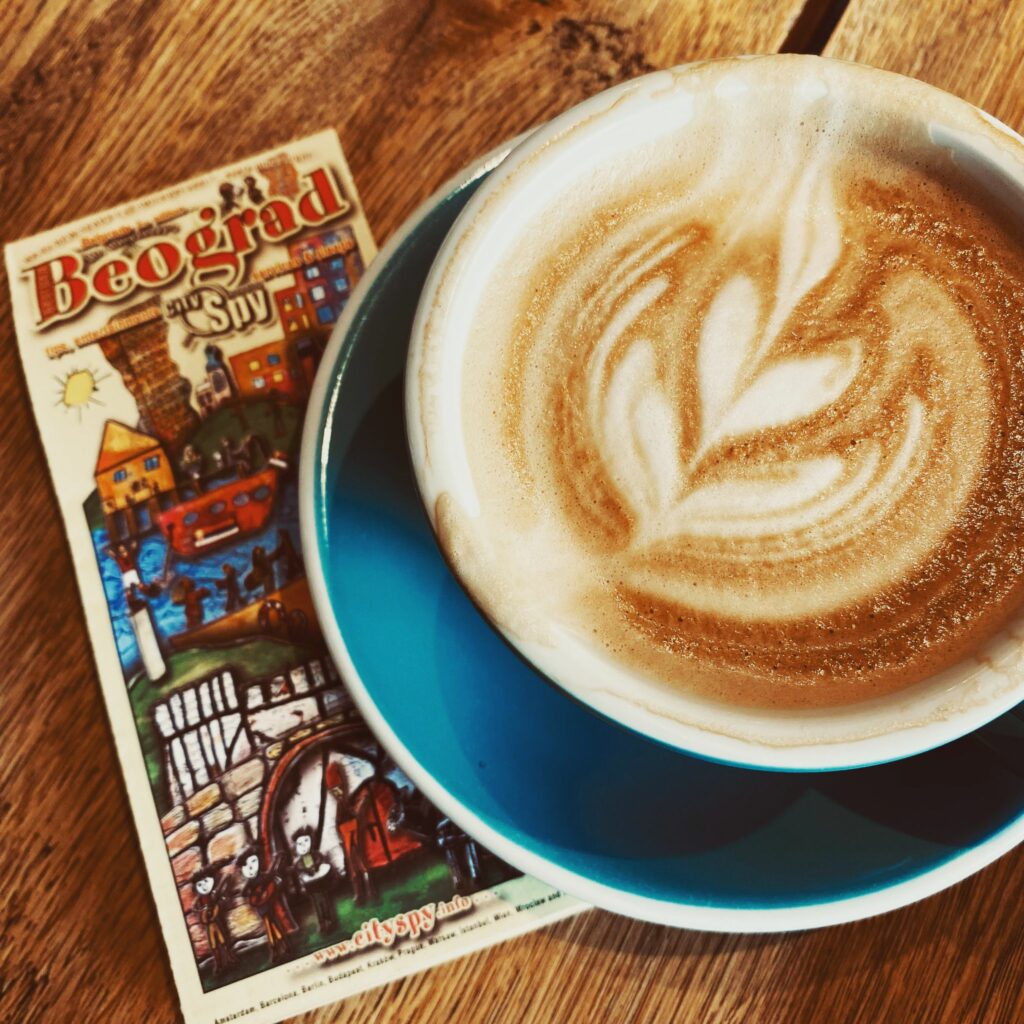
Here’s my #1 tip for food in Belgrade: people will tell you to go to Bucko, some pizza-by-the-slice place where they smear ‘salad’ (95% mayonnaise) on top of each slice. It’s absolutely horrible, and I don’t know why anyone pretends to like it (and this is coming from a man who eats everything). Try it and you’ll see what I mean.
Or if you profoundly disagree, leave a message in the comments and we can have a big argument.
Things to do When You’re Living in Belgrade
You’re a remote worker, so you’re not necessarily looking for loads of things to do.
Well, that’s a good job, cos in Belgrade, there’s not much to do at all (in terms of normal tourist hotspots anyway).
Most big cities have lots of tourist sites. Belgrade doesn’t. It’s got Kalemagden Park, two nice rivers and a couple of churches, but that’s about it.
But despite having not much to do in that sense, you’ll find loads of fun. There are loads of great events, cafes, bars, pubs, meetups and more. And you’ll always find someone to run, climb, drink, party, or play board games with. I much prefer cities where there’s a fun energy, rather than just a load of tourist sites to tick off. So I love Belgrade – and if you’re that type of traveler, you will too.
Make sure you visit Ada Ciganlija. A big lovely island inside of the Sava River, it’s like Belgrade’s version of a beach. it’s great for running, cycling, swimming, tennis, watersports, other sports, and lying around in the sun. It’s a lovely place to spend your weekends.

Nightlife in Belgrade
Belgrade’s nightlife is so, so good. I reckon it’s some of the best in Europe.
When you’re living in Belgrade, you’ll always find a party, and you’ll usually find it in an abandoned house, or on a boat, or in a place you thought was actually a coffee shop. If it can be repurposed into a nightlife venue, the people of Belgrade will repurpose it into a nightlife venue.
Some of my top picks for excellent nightlife are Zappa Barka, Strogi Centar, the whole Cetinjska area, and KC Grad. If you like real clubs, Drugstore is the best.
For the most unique nightlife experience, go to the riverside areas, where there are loads of ‘splavovi,’ (that’s bars and clubs on boats). Both the Danube and the Sava (they’re Belgrade’s two rivers) have them, but I reckon the best splavovi are the ones on the eastern side of the northern part of the Sava. They’re massively unique, massively fun, and they’re all really different from one another.
Covid Crap
Some people need a PCR test (taken within 48 hours of entry into Serbia). Others can use their vaccination status.
(But, of course, check current guidelines, and check them according to your nationality, and the place you’ll be traveling from).
But after that, there are very few other restrictions. When I was in Belgrade, there were no closures, no overreactions and no mass hysteria. Day-to-day, it was like Covid didn’t exist. So if you want to live in a place where people aren’t behaving like Covid is literally the end of the world, get yourself to Serbia.
(By the way, here’s why you shouldn’t let Covid stop you from traveling).
Making Friends in Belgrade
There are lots of foreigners living in Belgrade.
I first came here in 2015 . And since then, there are way more tourists and expats.
It’s pretty easy to make friends with those foreigners and expats, and with locals. The best place to find new pals is at all of the regular events hosted throughout the city. One of the best is the bi-weekly language exchange on Tuesdays at KC Grad, but there are way more.
There are lots of Facebook, WhatsApp and Couchsurfing groups, full of expats, locals and short-term residents. Join the groups, and you’ll find loads of events, parties, language exchanges, and plenty of people to hang out with.
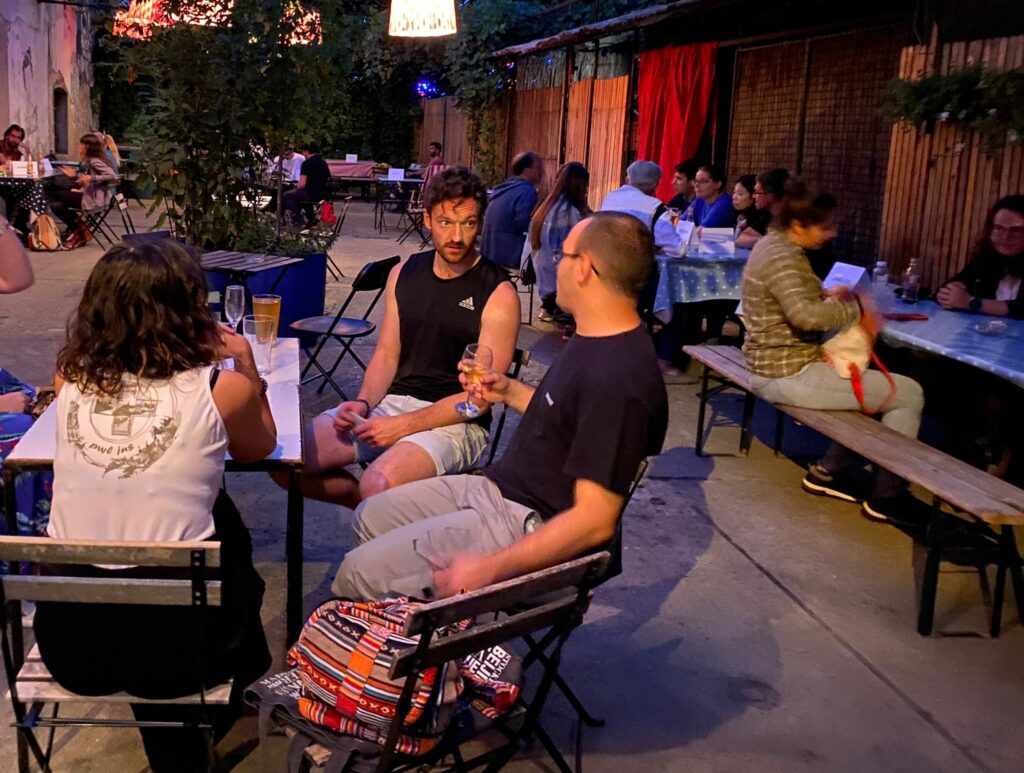
More Things You Might Want to Know About Living in Belgrade
- Level of English: People in Belgrade speak very good English. But if you make an attempt to speak even the most superficial Serbian, you’ll be loved. I only learned about 50 words, and people (for some reason) seemed impressed.
- Smoking: it’s still legal to smoke indoors in Belgrade. I don’t mind that at all, even though I’m a non-smoker. But I know lots of people do. It’s especially noticeable in colder months, when all the smokers bring their smoking indoors.
- Gyms: Belgrade has loads of gyms. I only went to one of them, because I loved it, so there was no need to wander elsewhere. It’s one of the best gyms I’ve ever been to, with loads of racks and benches, and plenty of great equipment. It’s called Ahilej Dorcol.
- People: People are friendly, helpful and welcoming. There’s a superficial sternness in Serbia (like in lots of central and eastern Europe). But once you get past that, you’ll realize the people are great. Compared to lots of other places I’ve visited, it’s easy to make friends with locals.
- Public Transport: Public transport is really cheap, and really good. You get trams, buses, and little minibus things (sort of like marshutkas but more modern). Most people don’t pay, because you tap a card onto a machine rather than handing money over to a driver. But if you want to pay, buy a travel card and top it up (you do both things at the red ‘Moj Kiosk’ stalls you’ll see everywhere).
- Cyrillic: Serbia doesn’t use just the Latin alphabet. Because every nation on the world accommodates English-speakers, you’ll see lots of the Latin alphabet in Serbia – but more often, you’ll see the Cyrillic alphabet, the nation’s native script. If you’re not used to it, you’ll soon work it out.
Final Thoughts
So, that’s everything you need to know about living in Belgrade!
All in all, I 100% recommend Belgrade for remote workers. People are friendly, the city is fun, the cost of living is low, and there’s something strangely charming about the place. Like everyone else, you’ll fall in love with it, but you won’t really be sure why. I wish I’d stayed longer, and I’ll definitely be back.
If you can, visit in summer, because Belgrade is way better in warmer months.
If you want any more tips or advice, add a comment or send me a message. And we’ll meet for a beer when I’m back. See ya!

